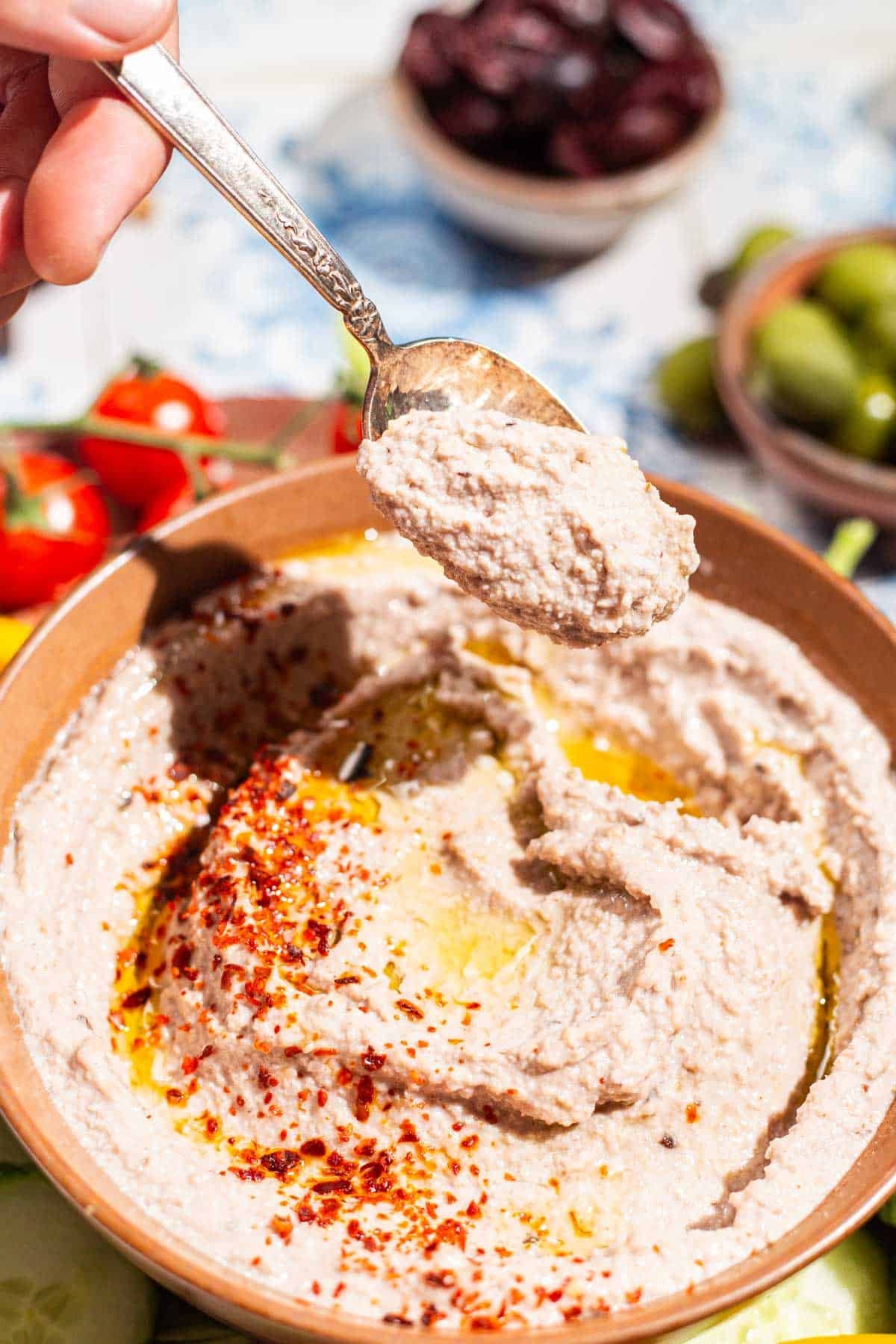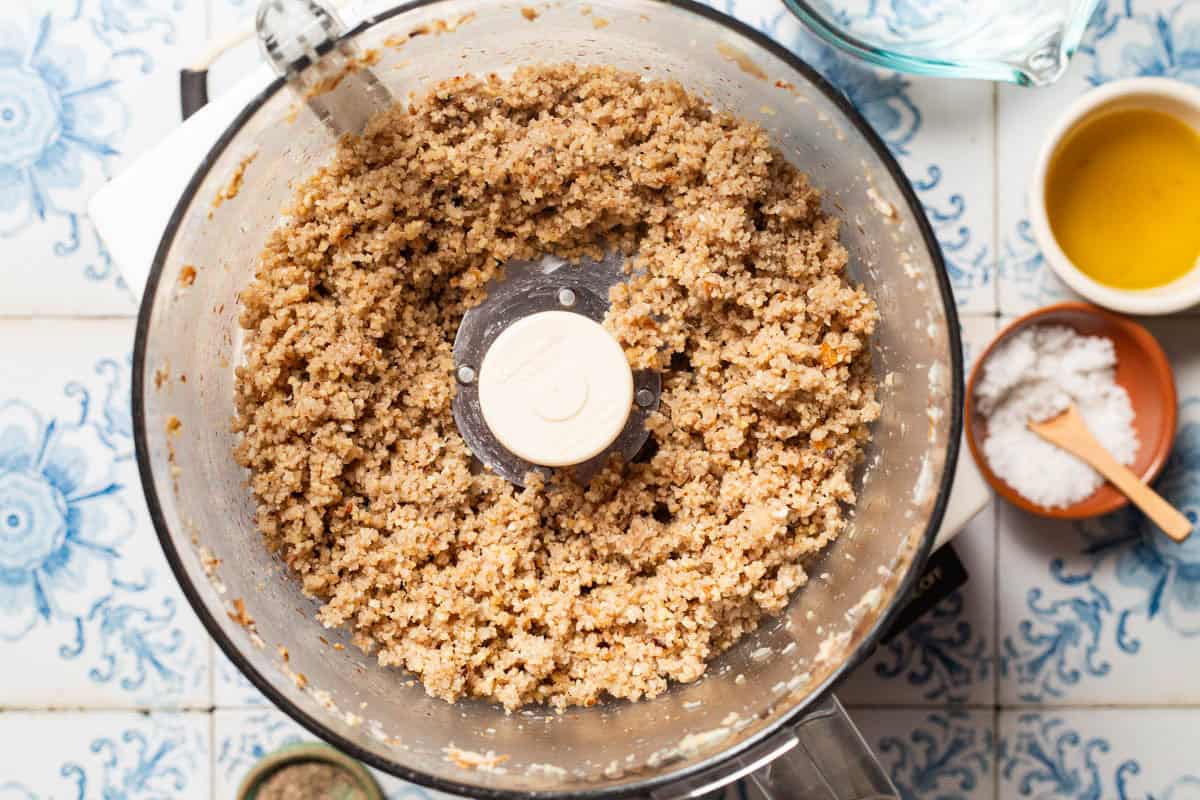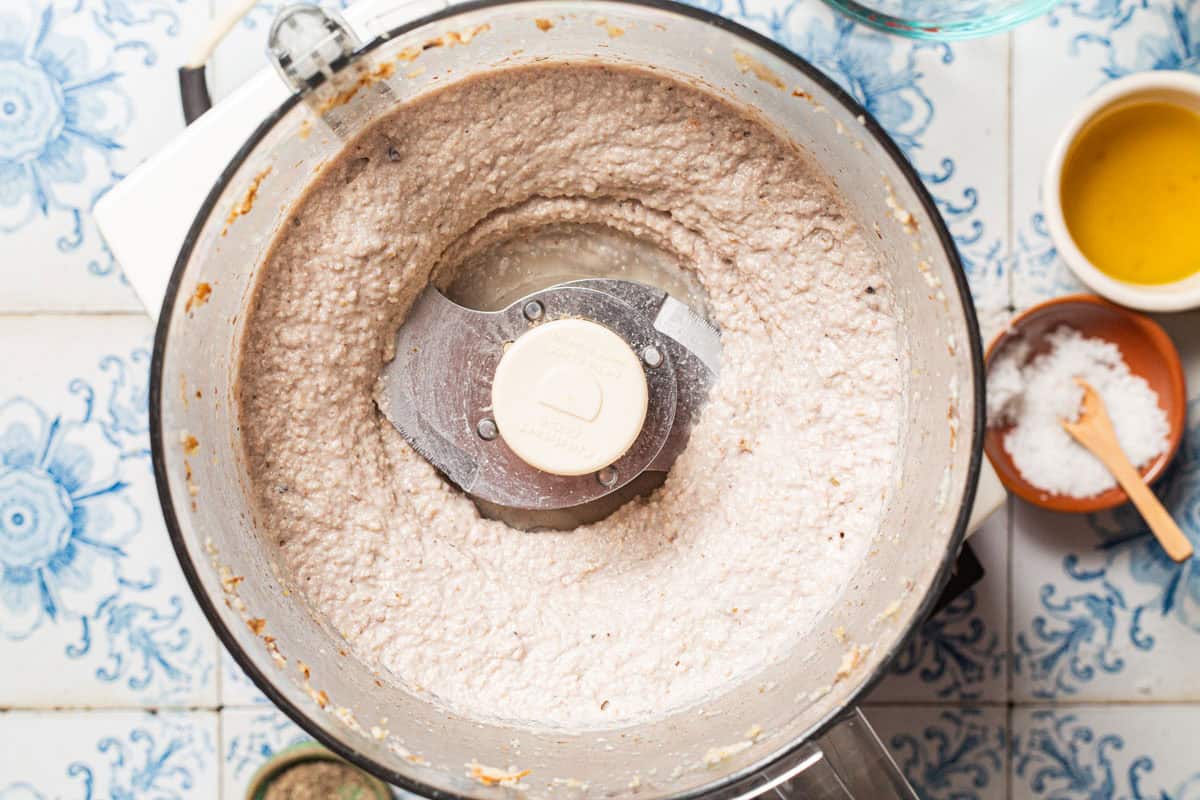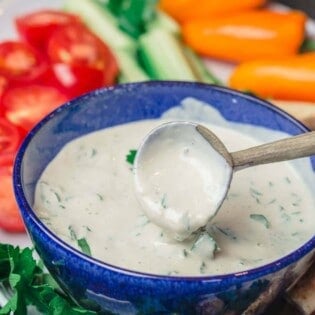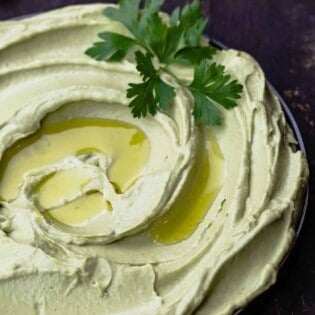Tarator Sauce is a flavor-packed sauce from my homeland, Turkey. It’s traditionally made with day-old bread, garlic, walnuts, extra virgin olive oil, and fresh lemon juice. It’s the perfect accompaniment to grilled fish, fried mussels, or Calamari. We also like to pair tarator sauce with braised spinach or collard greens, and use it as a dip for raw carrots, cucumbers, and cauliflower. Tarator is enjoyed throughout the Mediterranean, Levant, and the Balkans. Traditional Turkish tarator sauce is plant-based and thinned with water, though I have seen modern variations made with strained yogurt. In Lebanon and in the Middle East, tahini can be added instead of water, similar to a classic Tahini Sauce but with the bread giving it more body. This simple recipe prepares the Tarator Sauce the traditional Turkish way. It’s dairy-free but very creamy, and makes for an economical and delicious snack, condiment for fish or poultry, or beautiful dip to add to your mezze table.
What is in Turkish Tarator Sauce?
Like many of our mezzes, Traditional Turkish tarator is of humble origins and uses simple ingredients. You’ll need:
Stale bread: We use one or two-day-old white loaf bread traditionally. The dryness allows the water to saturate the bread without getting soggy. If preferred, use your choice of bread, toasted fresh bread, or bread crumbs. Garlic cloves: Garlic is widely used in Turkish cuisine. We use fresh garlic, which adds a delicious punchy and savory flavor to tarator. Walnuts: Wholesome walnuts are liberally used in Turkish cuisine in dips, salads, sweet and savory pastries. Walnuts add a lovely crunch, texture, and earthiness to tarator sauce. Lemon juice: Fresh lemon juice adds a nice acidity and refreshing flavor to the tarator. Please avoid bottled lemon juice and opt for fresh lemon juice for a naturally citrusy taste. Extra virgin olive oil: One of the most used ingredients in my kitchen, olive oil is life for us. Use the best quality extra-virgin olive oil to flavor tarator; I prefer cold-pressed, fruity olive oils to complement this dip, like our Private Reserve. Sea salt and freshly ground black pepper: Use good quality sea salt for a natural taste and grind black pepper just before using maximum flavor. Aleppo pepper: This optional seasoning adds a pop of color and subtle heat to finish. You can source it at select grocery stores, Middle Eastern markets, or online at our shop.
How to Make Tarator Sauce
You can make this simple sauce up to 2 days in advance. Here are the steps:
Make a paste. In a food processor fitted with the blade, add 2 slices (2oz) bread, 4 chopped garlic cloves, 1 cup walnuts, and 3 tablespoons lemon juice. Pulse until it turns into a rough paste. Make a sauce. Add 1/2 cup water and season with a big pinch of salt and black pepper. Blend on low speed until almost smooth, but not fully pureed (it is nice to feel the texture of walnuts a little). You’re looking for a loose hummus-like consistency. Finish and serve. Transfer to a storage container or serving dish and stir in 3 tablespoons olive oil until well-combined. Taste and adjust the seasoning. Sprinkle with Aleppo pepper (if using) and serve immediately, or cover and keep in the fridge for up to 2 days.
Ways to Mix it Up
During the Ottoman Empire, they not only used tarator sauce to accompany fish but they also made variations incorporating purslane and small cucumbers into the sauce. Here are some more (slightly more modern-day) ways people tweak their Tarator:
Add chicken: Fold the leftover tarator sauce into cooked, shredded chicken with chopped parsley–it makes a lovely sandwich filling, similar to a classic Chicken Salad sandwich. Use to make dairy-free Creamed Spinach: Braise spinach or collard greens in olive oil and enjoy with tarator sauce. Make it creamier and tangier: Stir in 3 tablespoons of Greek yogurt. Vary the nuts: Instead of walnuts, try using pine nuts, hazelnuts and/or almonds. Finish with spiced oil: To make pul biber oil, heat 1/4 cup olive oil in a small sauté pan over medium. Stir in 1/2 teaspoon Aleppo pepper (you can source this Middle Eastern dried chili pepper at our shop). Stir to infuse for 40 seconds, then remove from the heat.
What to Serve with Tarator Sauce
Serve tarator as a condiment for fried mussels, Crispy Fried Calamari, or grilled fish–see our round-up of 10 Favorite Grilled Seafood Recipes for ideas. Tarator is also wonderful as a dipping sauce for fresh vegetables, such as sliced carrots, cucumbers, and cauliflower, as part of a crudité platter for entertaining, or simply as a healthy afternoon snack.
How to Store Tarator Sauce
Tarator sauce is great to prep ahead, as it keeps well in the fridge for 1-2 days. If kept in the fridge, thin the sauce out with 3 tablespoons of room temperature water before using. Browse all Mediterranean recipes.
Easy Hummus Recipe (Authentic and Homemade)
Tahini Sauce Recipe-How to Make Tahini Sauce (Video)
Extra Creamy Avocado Hummus Recipe
Ultra Creamy White Bean Hummus Recipe
Visit Our Shop. Four of our best-selling signature olive oils, perfect for everyday use.





